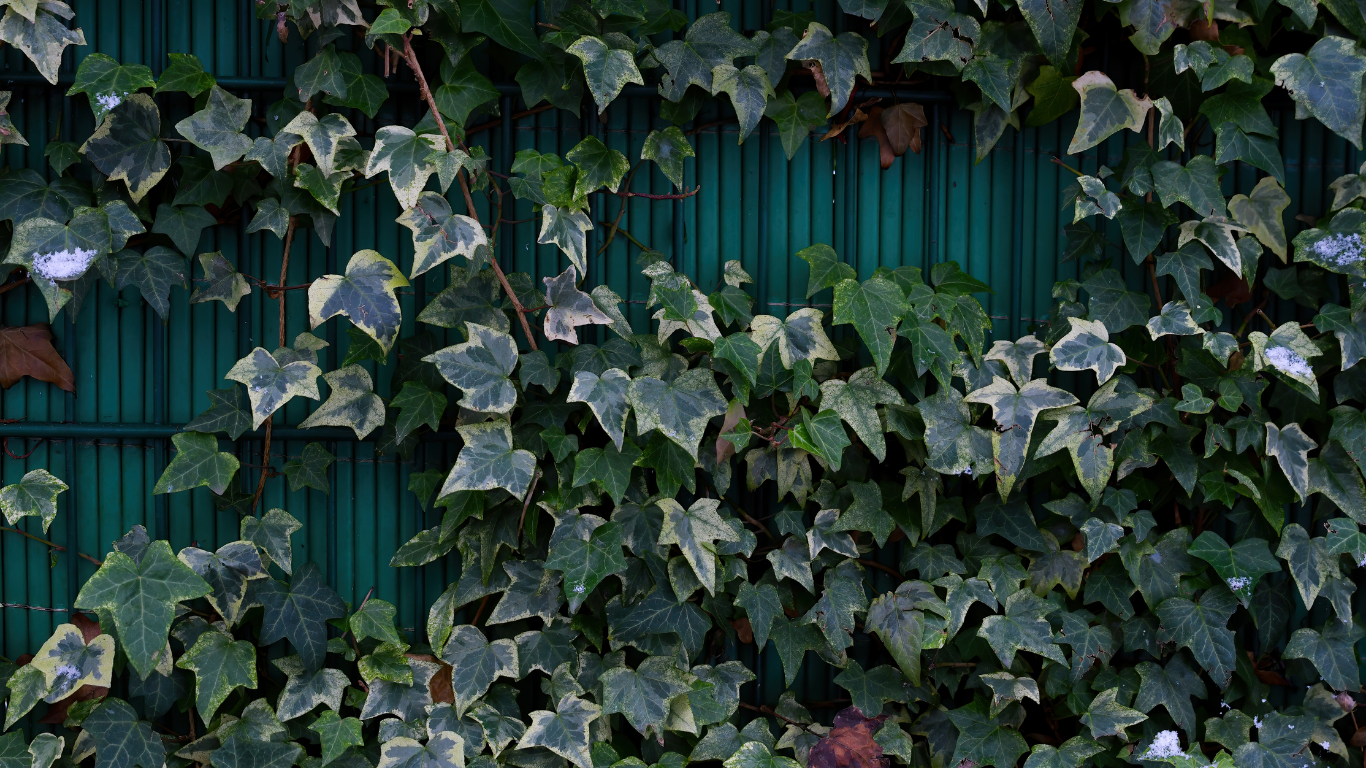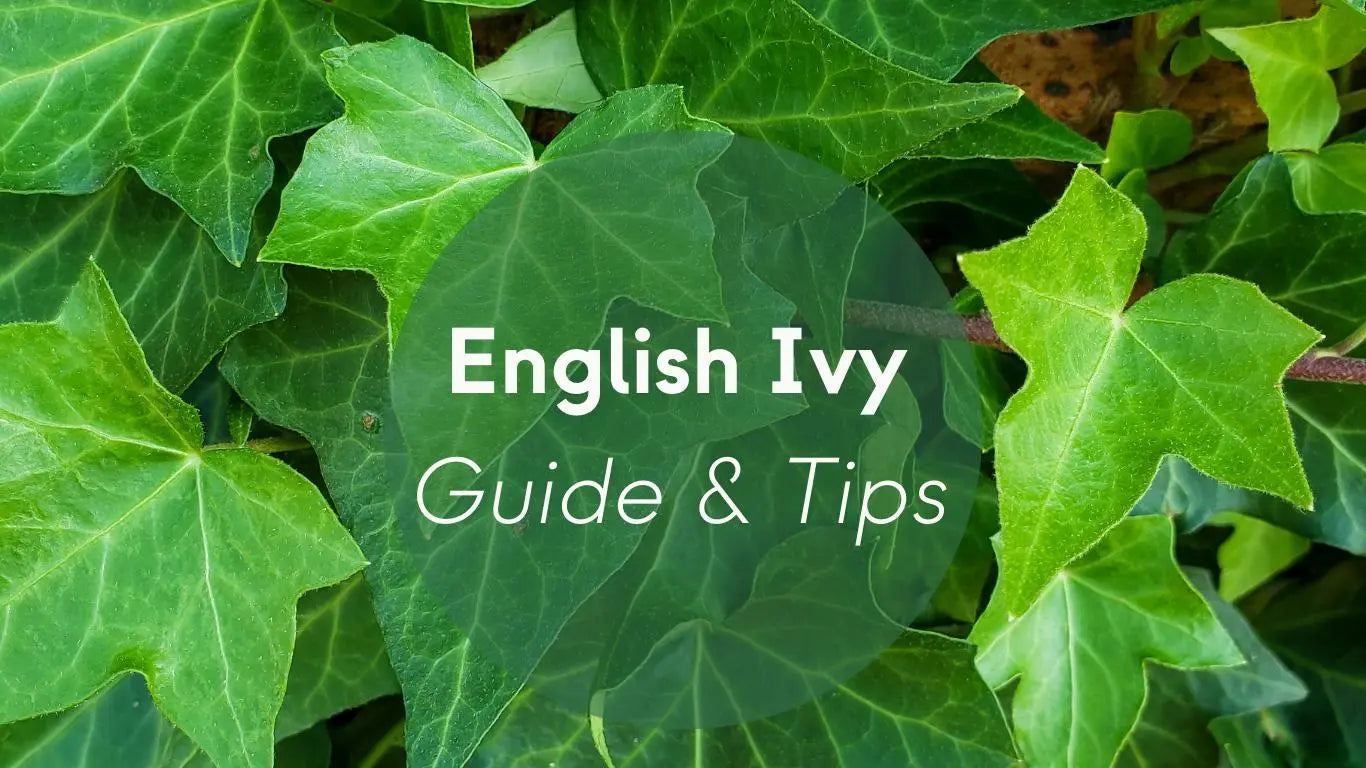
The english ivy plant is a fast-growing evergreen vine that makes for a great outdoor addition. English ivy plants are hardy, and one of the easiest houseplants to grow.
About English Ivy Plants
English ivy (Hedera helix) is considered an evergreen perennial. It is also classified as a woody vine. English ivy can act as a ground cover, spreading horizontally, but it is mostly used as a climber vine, due to its strong aerial roots, which allows it to attach even to the smoothest of surfaces.
The plant will eventually bear some very small, greenish flowers, but it is grown primarily for its evergreen leaves. The best time to plant English ivy is normally spring. Remember that English ivy is a fast, aggressive grower that is considered invasive in many areas. You should also keep an eye on children and pets because English ivy is mildly toxic to both humans and animals.
|
Common Name |
English ivy, common ivy, European ivy |
|
Botanical Name |
Hedera helix |
|
Family |
Araliaceae |
|
Plant Type |
Perennial, evergreen climbing vine |
|
Mature Size |
N/A; climbs and spreads as much as possible |
|
Sun Exposure |
Part shade to full shade |
|
Soil Type |
Fertile and moist |
|
Soil pH |
Neutral to slightly alkaline |
|
Bloom Time |
Fall |
|
Flower Color |
Greenish-white, greenish-yellow |
|
Hardiness Zones |
4-13 (USDA) |
|
Native Area |
Europe, Scandinavia, Russia |
|
Toxicity |
Toxic to people and pets |

How to Plant English Ivy Plants
Potting English Ivy Plants
-
Plant the ivy in a rich houseplant potting mix.
-
Use a container with drainage holes.
-
Place the ivy in bright light, but try to avoid direct sun. It tolerates low to medium light, but growth is reduced and variegated varieties may turn all green.
-
English ivy prefers cooler temperatures, so keep it away from radiators, heating vents, and hot windows.
Are English Ivy Plants Poisonous?
Yes. Despite being a very popular houseplant, English ivy plants are mildly toxic. Ingestion of English ivy can cause swelling and a burning sensation in the mouth and throat, as well as intestinal discomfort and indigestion.
Due to its toxicity, this plant should be grown with caution around curious pets and children.

How to Care for English Ivy Plants
Basic Care for English Ivy Plants
-
After watering the ivy let the soil dry to the touch before watering again.
-
Spray the leaves with water weekly to discourage spider mites.
-
Wipe the leaves periodically with a moist cloth to help prevent insect pests.
-
Fertilize in early spring and late summer with a houseplant fertilizer.
-
Most types of ivy stem cuttings will root easily in water.
-
Repot the ivy in a slightly bigger pot when it becomes root bound or top-heavy.
English Ivy Pest and Diseases
-
Mealybugs, mites, aphids, whiteflies and scale insects are the most common pests of ivies.
-
Root rot can occur from a soil that does not drain quickly or overwatering.
-
Other common plant diseases are very rare.

How to Propagate English Ivy Plants
Englishivy plants are very easy to propagate, making them a great houseplant to share with family, friends, and neighbors. Alternatively, keep all the offspring to yourself and turn your home into a small viny jungle, they will understand!
To propagate your english ivy, follow these steps:
-
Locate a healthy-looking vine to take a cutting from. Leaves should be bright and healthy, and should not be wilted.
-
Make a stem cutting. The ideal stem cutting will be 4-6 inches in length and have 2-3 leaves on it. Cut the vine just above a root node (i.e., the spot on the vine where aerial roots grow out of).
-
Once you have your cutting, place the cut end in either a small pot of potting soil or a clear glass of water. English ivy plants can be grown in water or soil, but they tend to work much better in soil.
-
After a few weeks, you should start to observe that the plant can support itself and start growing new leaves.
English Ivy Varieties
Different varieties of English ivy are not hard to come by in most garden centers, and they have been increasing in popularity a lot in recent years.
-
Hedera helix ‘Anne Marie’ has medium green leaves with a creamy white edge.
-
Hedera helix ‘Glacier’ is a common cultivar with silvery variegations and white margins.
-
Hedera helix ‘Gold Child’ is one of the more popular variegated ivies. It has soft green leaves with wide bright cream-yellow margins.
-
Hedera helix ‘Congesta’ is bushy with dark green leaves that are tightly and evenly arranged along a stem.

English Ivy Did You Know
-
The plant’s sap can cause skin rash.
-
Ivies can be trained to climb different shape frames such as hearts, circles, cones, or pyramids. Choose plants with long stems and weave them around the frame placed in the pot.
-
English ivy grown outdoors is considered invasive in a number of regions of United States. The plant is on the official noxious weed lists in the states of Oregon and Washington.
-
In 1597 the herbalist John Gerard recommended to infuse ivy leaves in water as a wash for sore or watering eyes.

English Ivy Summary
English ivy is arguably one of the easiest houseplants to grow, even if you're someone who forgets to water your plants often enough. This trailing vine, native to Europe, has peculiar leaves shaped as that are sometimes variegated with white, dark green, or pale green striations.
This plant had a huge impact on ancient cultures mythology and spiritual beliefs, as its evergreen vines physically covered vast areas of Europe without much intervention.
The fact that English ivy plants spread quickly means that they can be useful as ground cover for filling in hard-to-plant spots in your landscaping. Their aggressive nature suggests that they could be effective allies against erosion on hillsides.
When it comes to automated plant care systems, ivy plants are one of the plants that usually struggles with them, as it only require infrequent but heavy watering with intermittent dry periods. Only truly smart plant care systems like KORU can adapt to each plant's different needs, helping them to thrive by measuring light, temperature, humidity and soil moisture.

Share:
Pothos Plants Care: Guide & Tips
Weeping Fig Plants Care: Guide & Tips